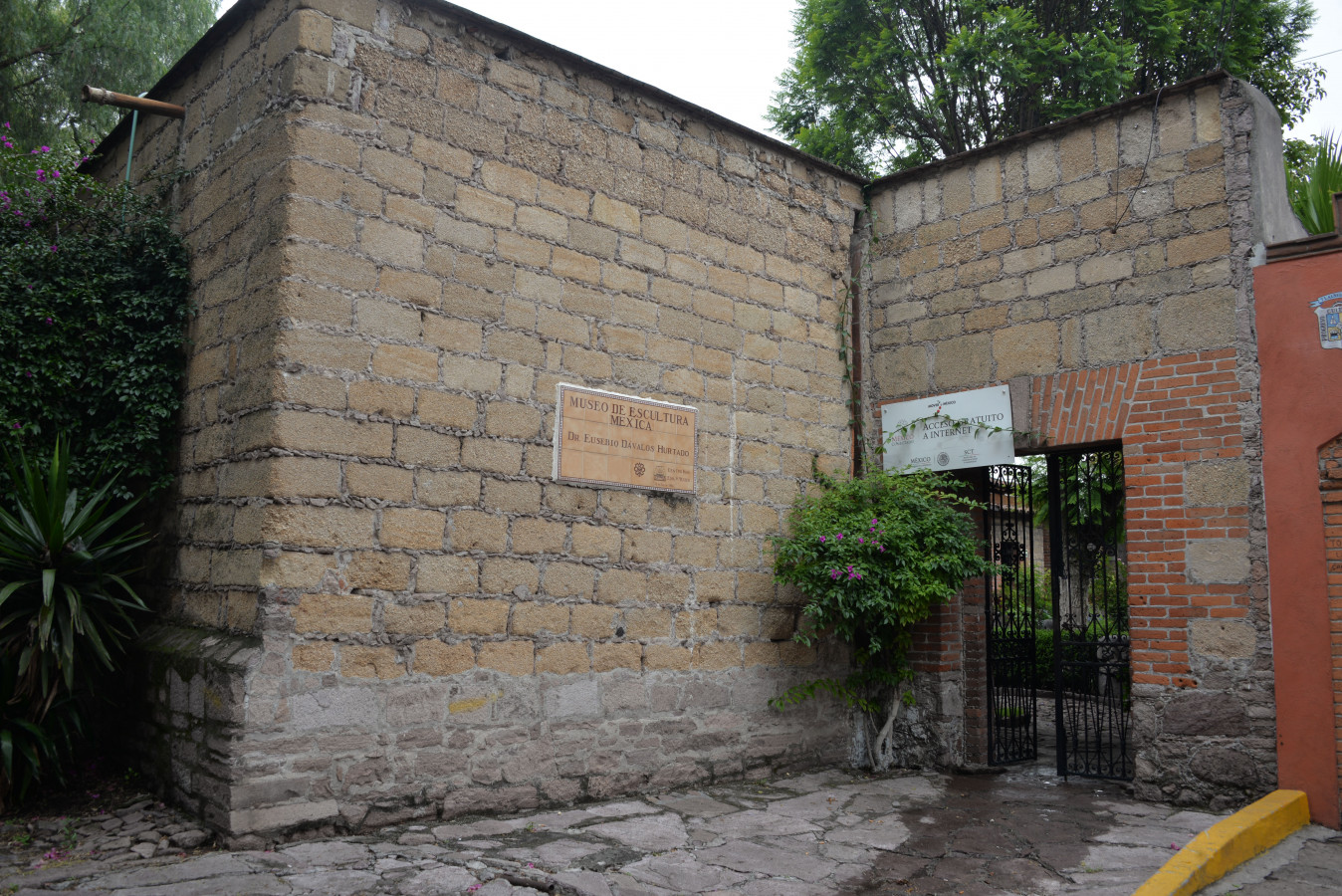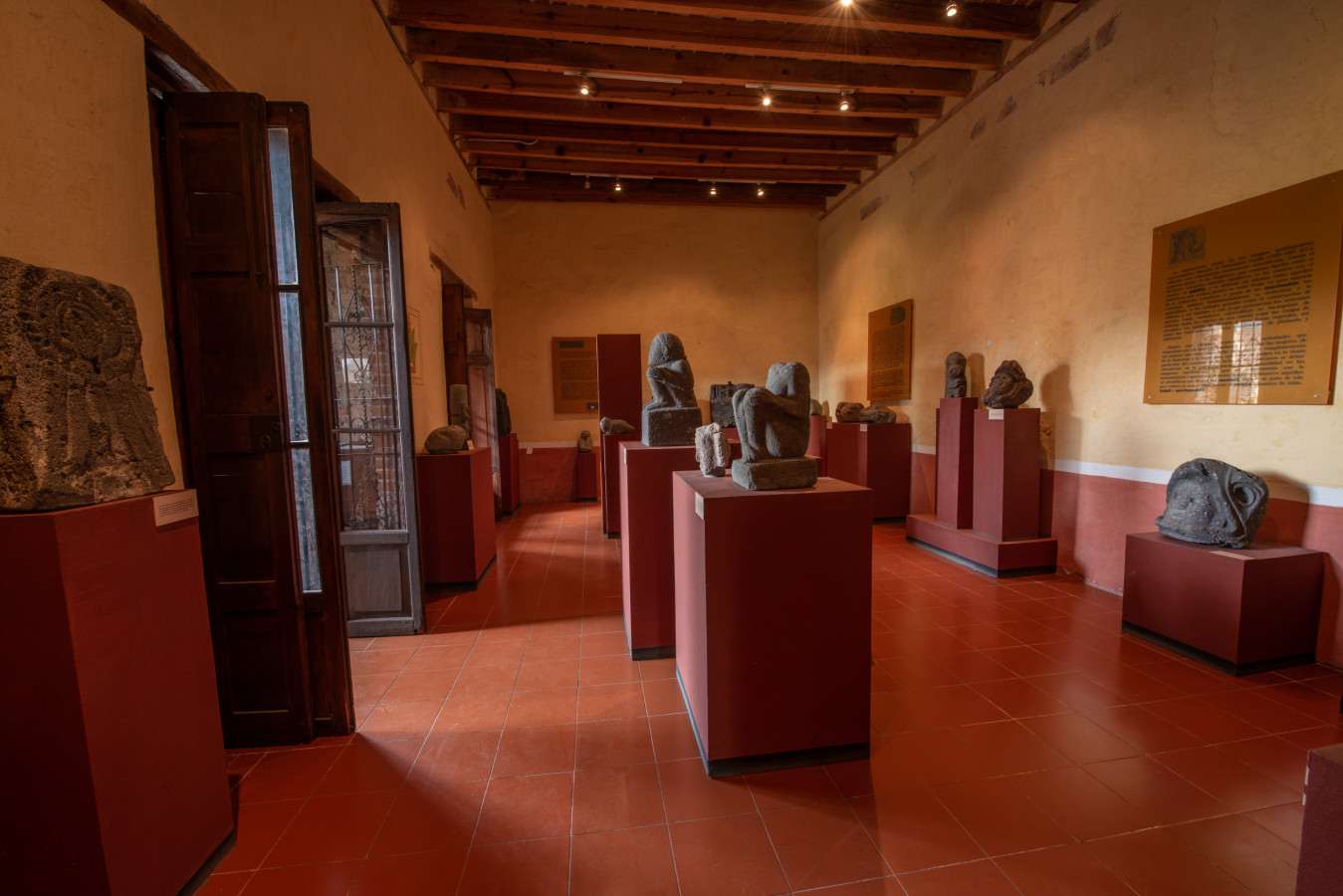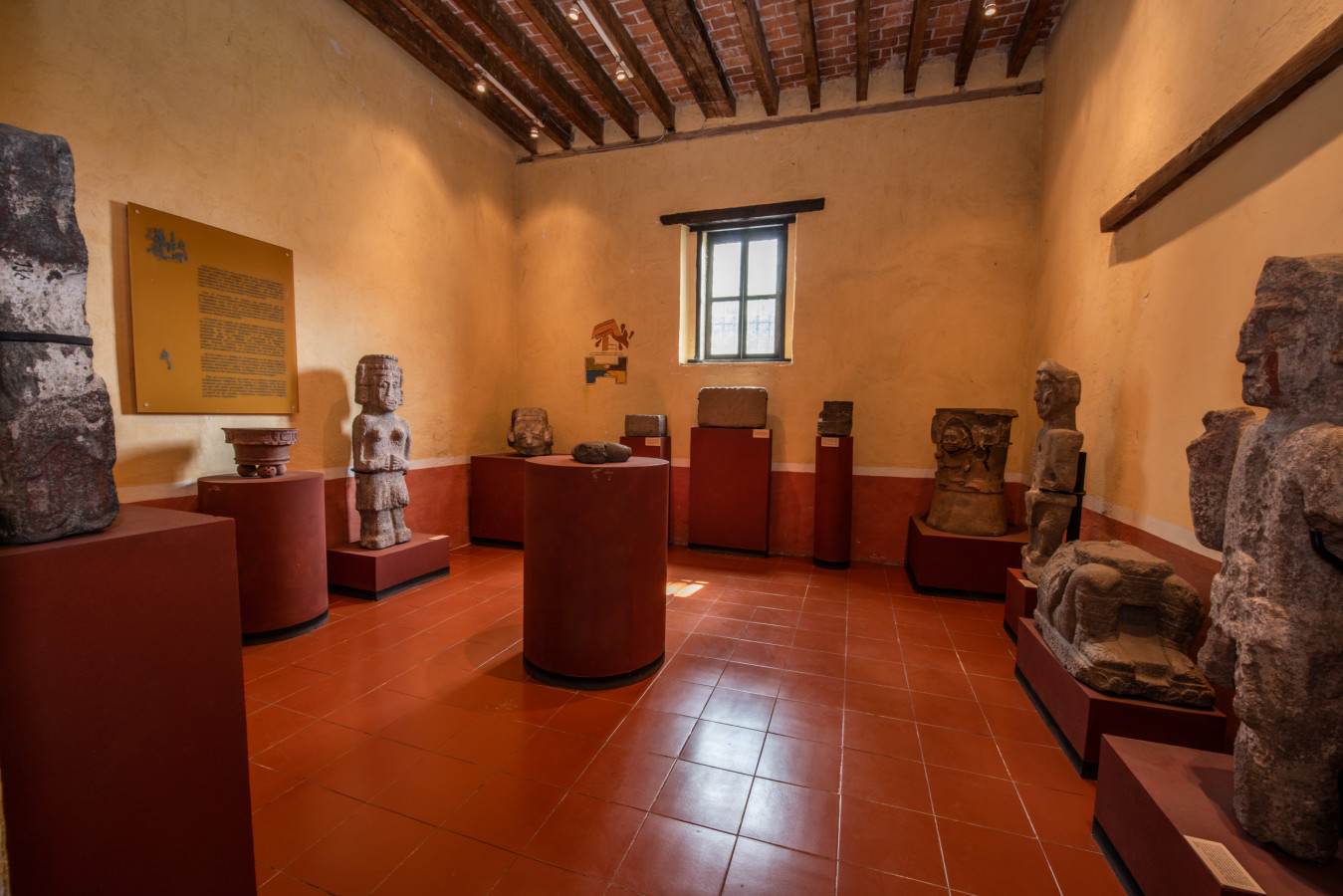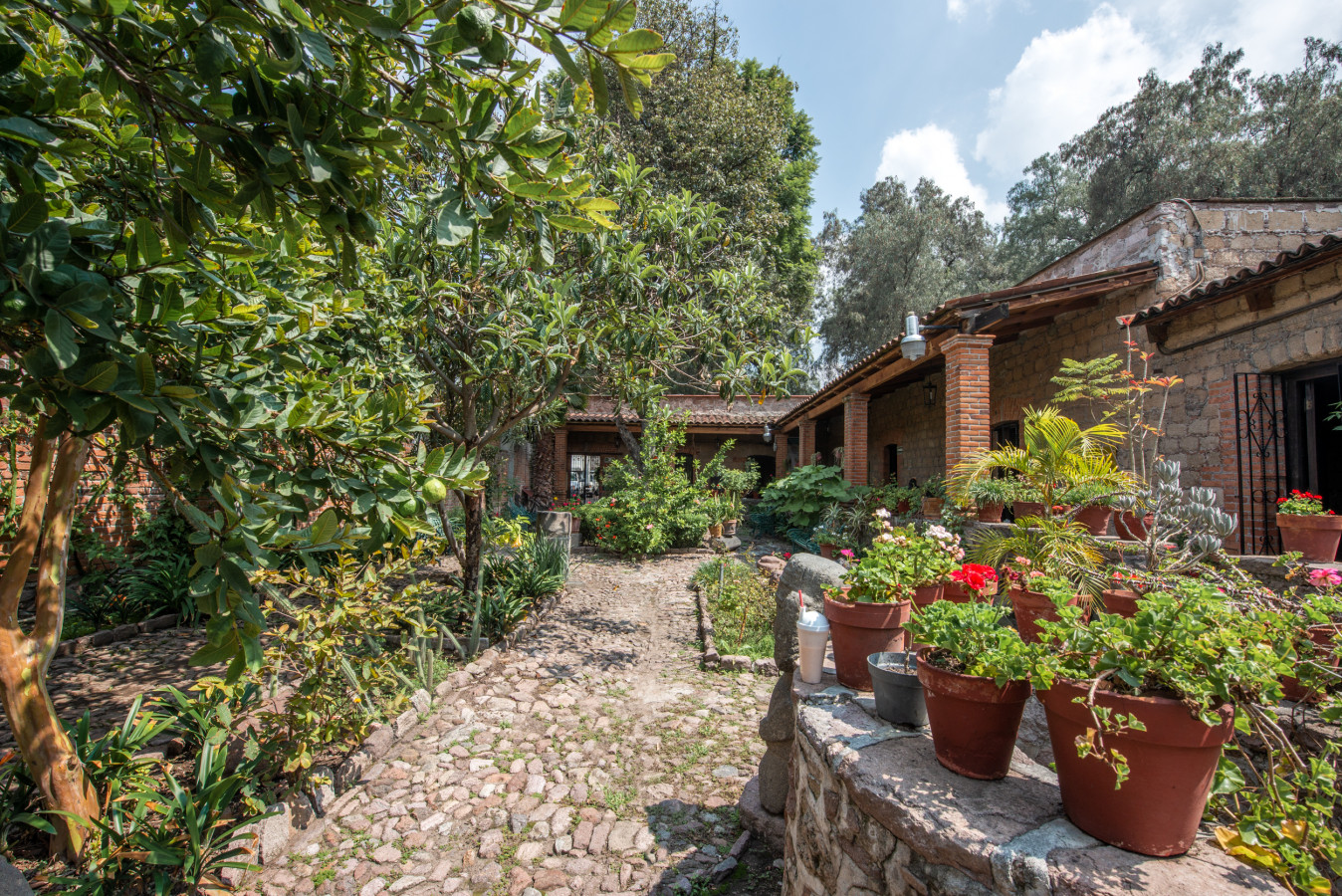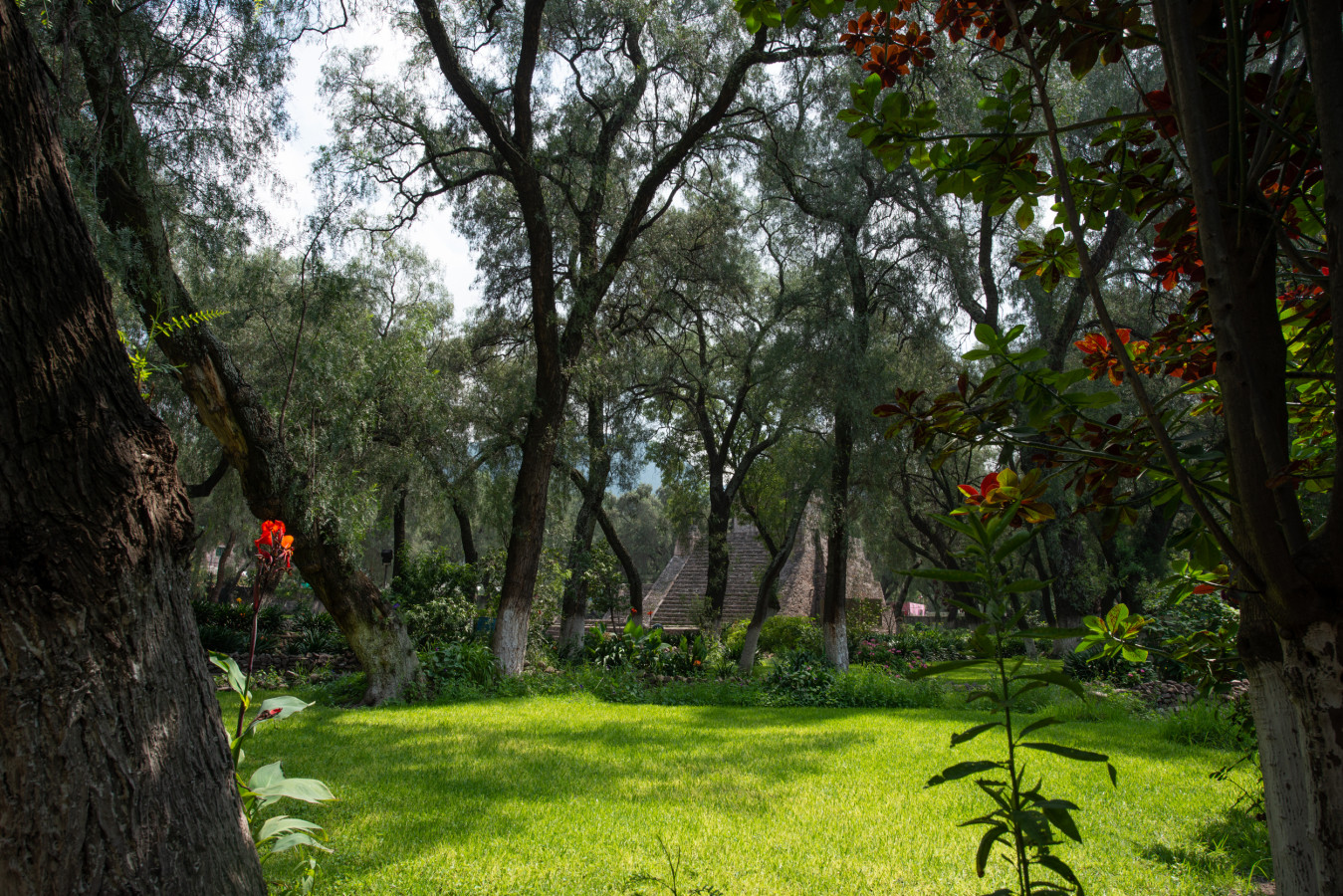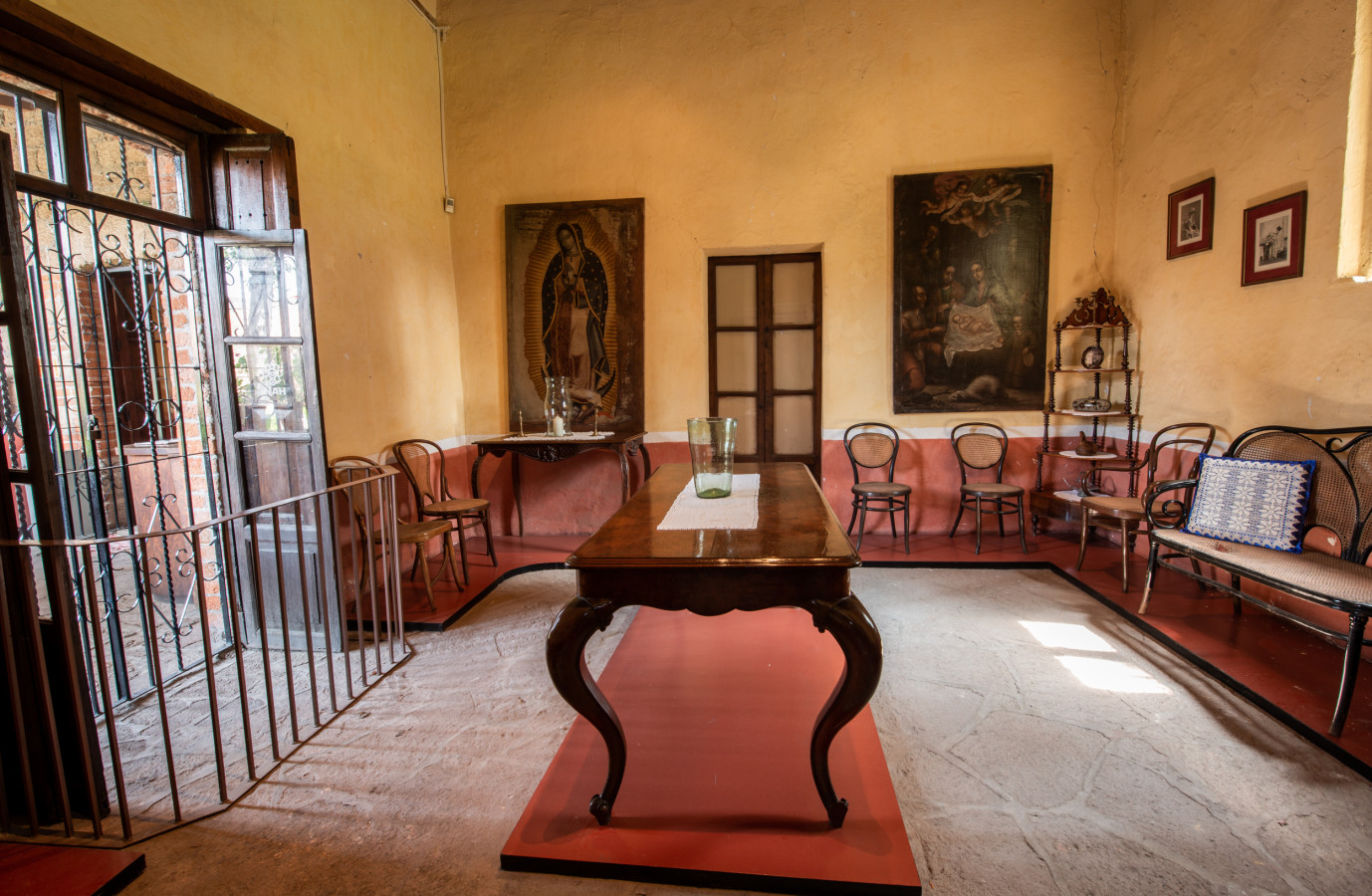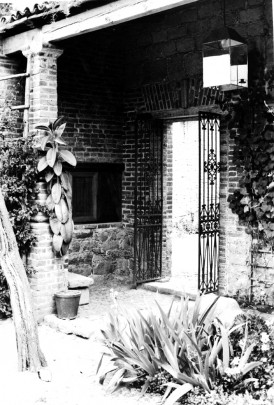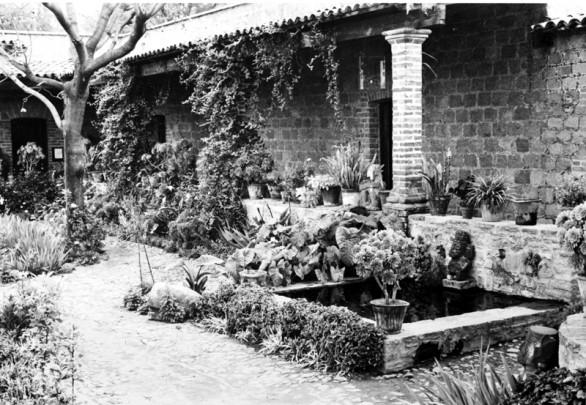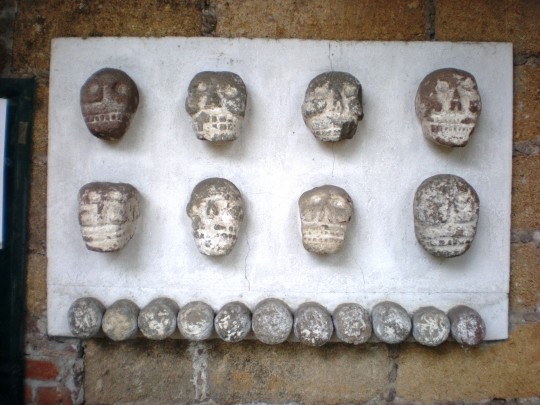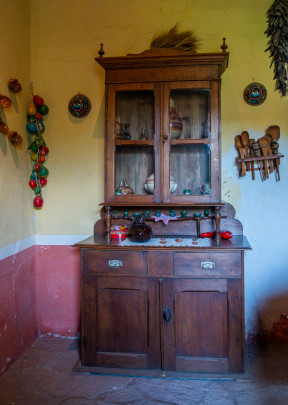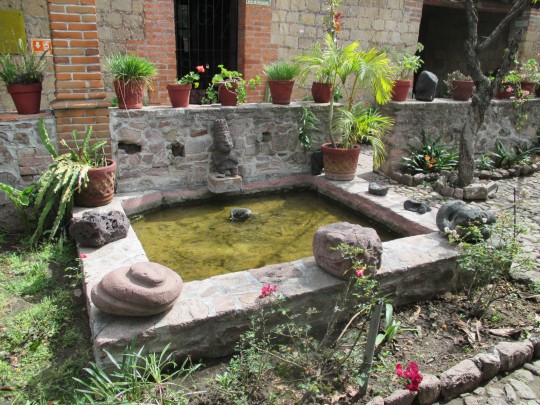The galleries include displays of objects recovered from various sites around the Valley of Mexico, as well as some from excavations of the archeological zone of Santa Cecilia Acatitlan, and a dedicated space for Mexica sculptures as well as exhibits showing how people lived their daily lives in the region. Hidden away down narrow, cobblestone alleyways in Santa Cecilia Acatitlan, a neighborhood of Tlalnepantla, and partially hidden by the church of Santa Cecilia, this museum occupies a late-eighteenth-century mansion with a corridor and rooms ranged around a central patio.
It is named in honor of eminent physical anthropologist, Eusebio Dávalos Hurtado (1909-1968). The museum first opened its doors in 1964; it re-opened in 1982 and given a new exhibition design in 1996.
The sculptures were found at the site itself and also come from various locations around the Valley of Mexico, as well as from the states of Morelos and Veracruz. The first two galleries and garden are used for exhibitions of Mexica sculptures dating from the Late Postclassic (1300-1521), excavated from this site as well as from the Templo Mayor (Great Temple) and the National Museum of Anthropology. The sculptures are arranged according to three themes: “Landscape and natural resources in pre-Hispanic times,” showing figures of animals such as eagles, grasshoppers, toads, jaguars, tigers and snakes; “Physical traits and idealized forms of beauty in human figures” with necklaces, ear flares, masks and caps; “Religion and depictions of the gods,” such as Mictlantecuhtli, a Chac-Mool, and deities associated with forces of nature, such as the rain god Tlaloc. The exhibits are carved in materials such as tezontle, rhyolite, andesite and basalt. Displays in the garden include representations of shells, carved skulls and coiled snakes.
The four remaining galleries contain a collection of historical artefacts, and a living room, dining room and kitchen are decorated with period, domestic objects such as plates and jugs, photographs, religious images as well as furniture, to give a sense of daily life in the region. At the rear is a “tinacal,” a special type of vat used in the pulque-producing region.
From Mexico City, take Calzada Vallejo or Eje Central to Tenayuca, then the Santa Cecilia-San Rafael avenue to the town of Santa Cecilia; or via the Jesús Reyes Heroles road, take the Santa Cecilia-San Rafael avenue.
By public transport: via Metrobus line 3 running from Lindavista to Tenayuca.
-
+52 (722) 215-7080, +52 (722) 213 9581. Ext. 198031.
-
This email address is being protected from spambots. You need JavaScript enabled to view it.

